How Safe Have Singapore's Roads Gotten in the Past 10 Years?
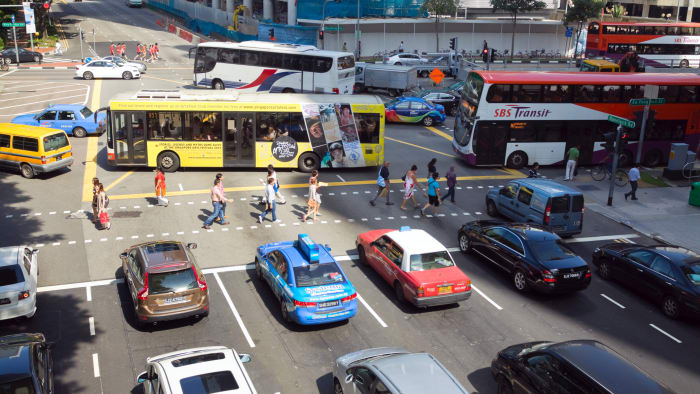
With an increase in vehicles in a country that has limited space, you would think accidents would increase as well due to the increased congestion. Surprisingly, the numbers paint a different picture, with car accidents and deaths in Singapore actually declining despite the increased number of motor vehicles on the road. However, despite the optimistic figures, motor vehicle accidents remain a cause of concern, especially when comparing fatality rates with Singapore's global peers. Below, we examine the state of Singapore's roads, where we've seen improvements and how Singapore compares to its peers.
Key Highlights
- Singapore's roads are getting safer, with the chance of getting into an accident within a 10-year driving span decreasing to 7.9% from 9.2% in 2008.
- Reckless driving remains one of the most common causes of car accidents
- Drink driving decreased by 85% , most likely due to increased awareness and increase ride-sharing services
- Pedestrian safety has only gotten marginally better in the past 10 years
- Singaporean drivers get into less accidents than in the past but has a higher fatality rate compared to similar sized cities around the world
Probability of Getting into an Accident Has Declined Since 2008
Despite the 7.5% increase of motor vehicles in Singapore over the past 10 years, road traffic accidents have actually barely grown; in fact, accidents now only represent 0.82% of the motor vehicle population in 2017 compared to 0.96% in 2007. Over a typical 10 year COE lifespan, this translates to the probability of getting into a road accident decreasing from 9.2% in 2008 to 7.9% in 2017. Furthermore, this decline in accident rate is coupled with a decline in fatality rates—from 4.57 per 100,000 people in 2008 to 2.16 per 100,000 people in 2017. This indicates an overall trend of Singapore's roads becoming safer, despite traffic accident numbers fluctuating year to year.
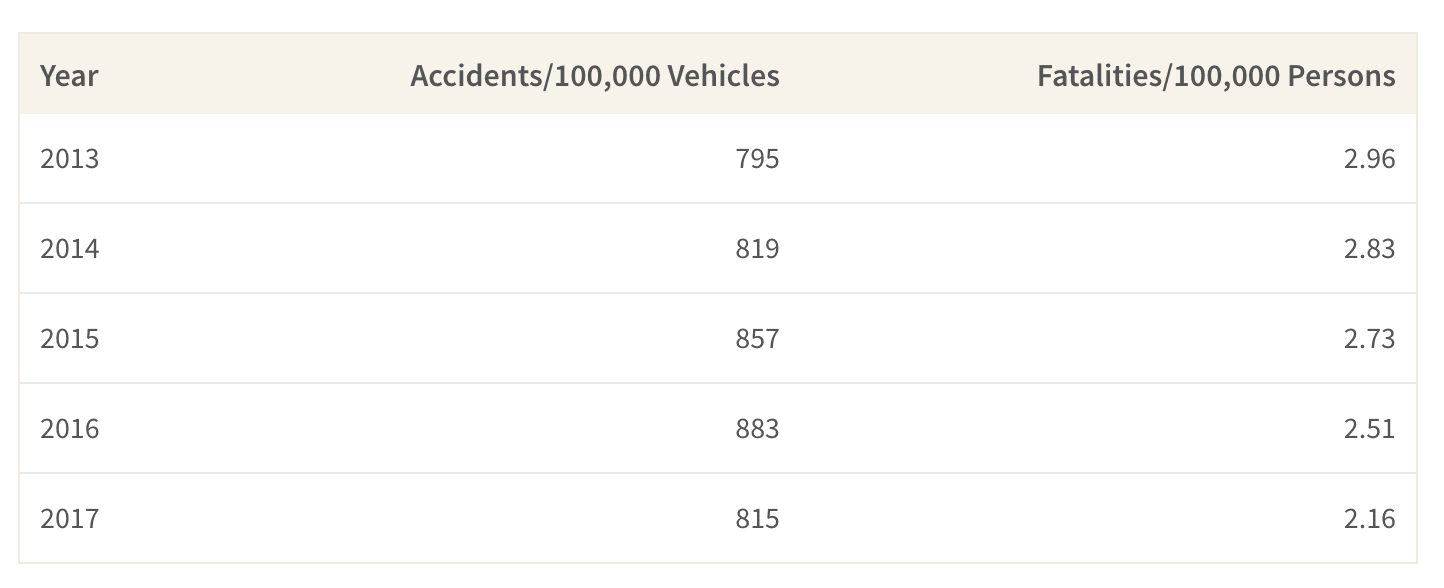
Reckless Driving Remains a Core Reason for Motor Vehicle Accidents
Still, reckless driving remains a significant problem for drivers in Singapore. It's quite often we see on the news reports of car accidents where the driver either lost control of their car or was purposefully engaged in dangerous driving. Whether its speeding, not turning carefully or not maintaining a proper lookout, actions that can qualify as reckless driving account for more than half of recorded accidents in 2017. This is unsurprising with the increase of distractions present in the car ranging from cell phones to bluetooth and entertainment systems. Furthermore, it also shows us that driving in Singapore can be a high stakes game filled with stress and desire to get to a destination as quickly as possible. On the other hand, one bright side of our findings was that drink driving has decreased significantly by 85% in the past 10 years, possibly due to increased awareness of its dangers coupled with the increased availability of safer alternatives such as such as Grab.
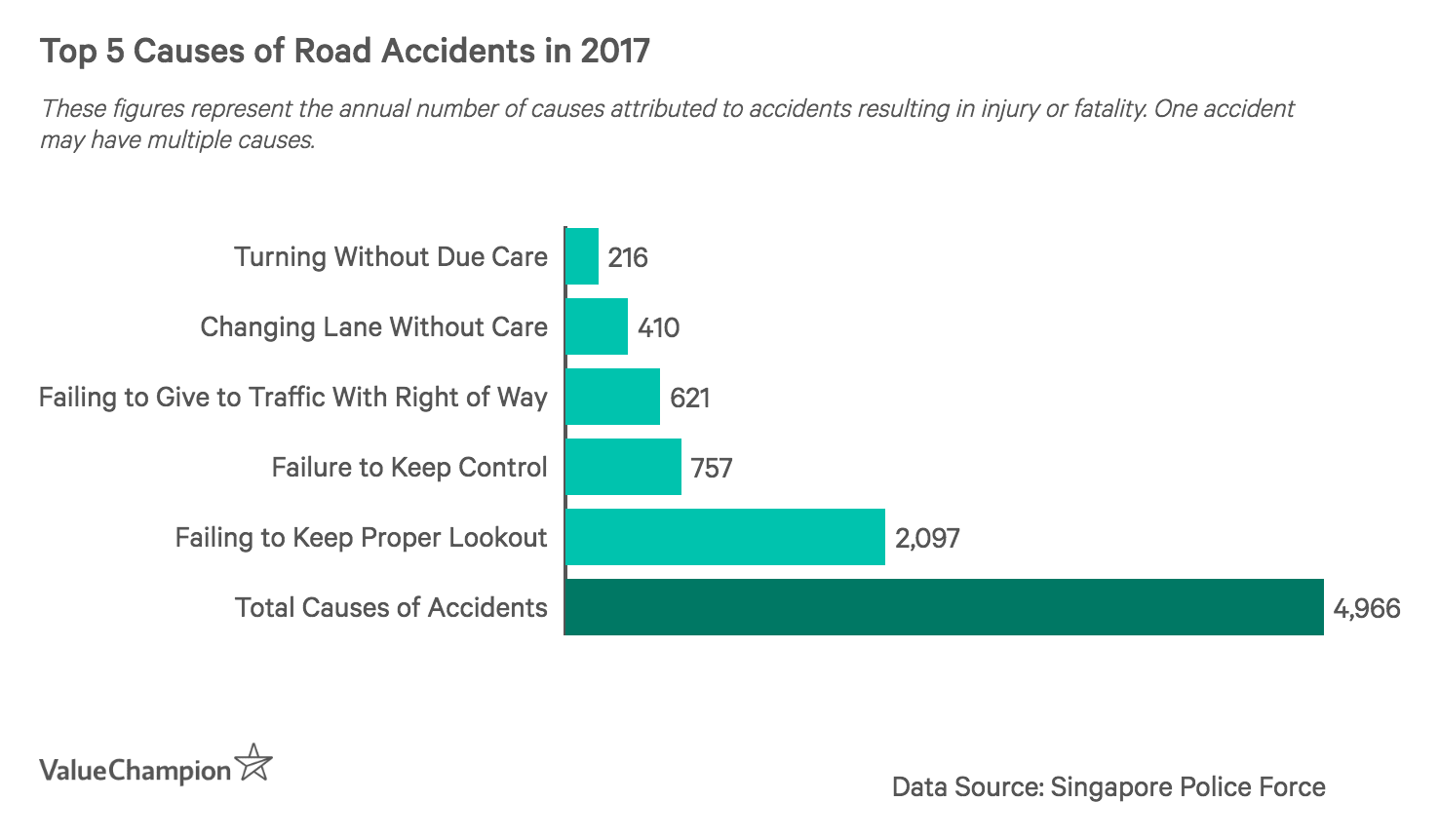
Pedestrians Are the Main Victims of Road Accident Fatalities
In 2017, the majority of road accident non-fatal casualties were motorcyclists and pillion riders followed by car drivers/passengers and tailed by pedestrians. However, fatalities paint a different picture. While motorcycle and car fatalities have both decreased by almost 60% between 2008 and 2017, pedestrian fatalities decreased only by 27% and now make up a larger portion of total fatalities. Furthermore, 4-5% of total pedestrian casualties consistently resulted in death annually between 2008 and 2017. These figure suggest that the roads in Singapore have not actually gotten much safer for pedestrians. Unfortunately, this is especially true with older Singaporeans, who have been bearing the brunt of pedestrian accidents and account for almost 60% of all total pedestrian casualties.
Percentage of Casualties Ending in a Fatality by Road User
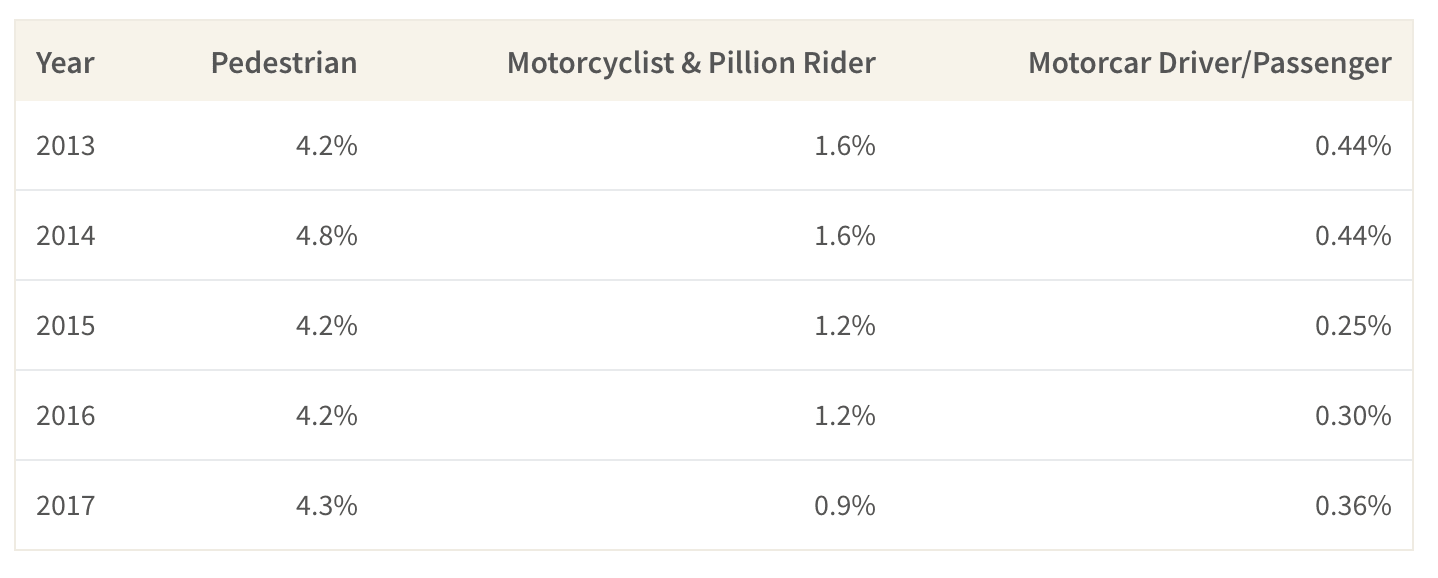
How Singapore Compares Globally
Singapore is considered to be quite a safe place globally, even when compared with similarly sized cities and countries. When comparing road accident and fatality rates in 2015 with 4 similar sized cities, however, Singapore had the second highest fatality rate. For instance, Singapore's road fatality rate of 2.73 per 100,000 citizens is higher than London, Hong Kong and Tokyo, but less than Seoul's. Still, compared to London and Hong Kong, Singapore's rate of accidents per 100,000 cars is far lower. This indicates that while Singapore sees less road accidents compared to its peers, the accidents are more severe. This finding is further backed up by the recent increase in car insurance claims, where despite less accidents, car insurance claims increased by 11.8% in 2017, leading insurers to believe accidents have become more severe.
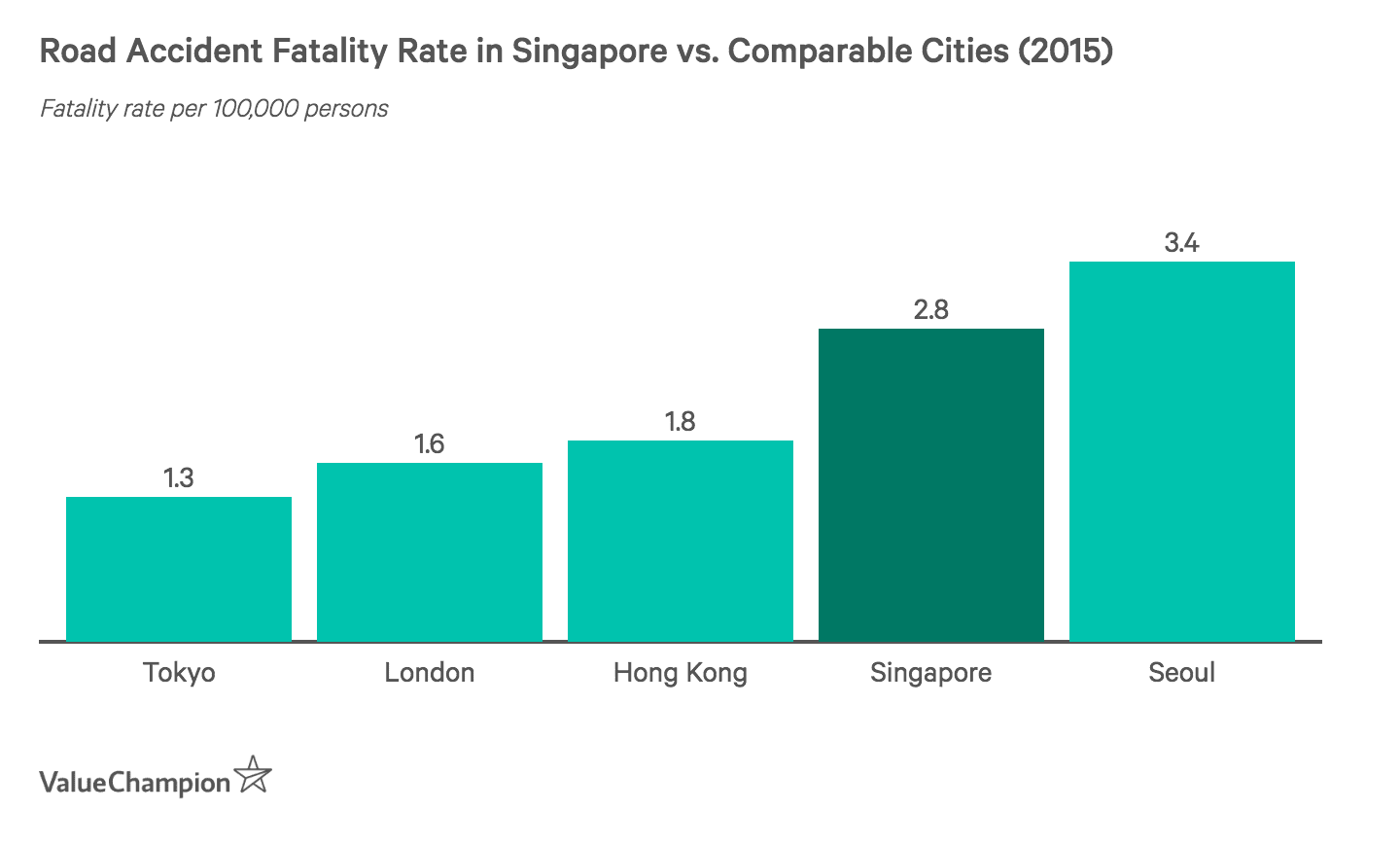
Driving Technology & Road Safety Awareness Aiding in Road Accident Drop
A number of factors may be behind declining motor vehicle accident rates. The first could be the introduction of car safety features in 2010. From 2010, most cars started to be outfitted with safety features such as lane keep assist, pedestrian avoidance and collision warning systems. These features along with automatic braking systems and alarm systems could have led to a decline in accident frequency and severity.
Additionally, Singapore is doing its part in creating awareness about pedestrian safety, drink driving and motorcycle accidents. Beyond campaigns that aim to raise awareness, there are also practical and additional driving lessons available for elderly drivers or those who want to practice safe driving. While increased awareness of problems may not be enough to decrease accidents, the increased awareness surrounding classes to take and the possible penalties faced with engaging in reckless driving could lead to more cautious and safe driving.
Lastly, emerging car insurance technology can also play a role in decreasing accidents. Certain insurers now offer telematics driving schemes that will track your driving and safety record in exchange for lower premiums. However, because this technology is still fairly new, it will take a few years to see whether these innovations will actually make people safer drivers. For example, drivers who know they are good, safe drivers are more likely to take advantage of this innovation, while drivers who are overconfident or are prone to accidents may opt out—keeping the accident rate stable.
Methodology
We compiled the most recent data possible from local and international government, including data from the Land Transit Authority, Singapore Police Force and the Meteorological Service of Singapore. To create a fair international comparison, we utilised cities similar to Singapore in terms of land mass, density and population as opposed to countries. For instance, instead of comparing Singapore to Japan, which has a total population of 127 million, we compared Singapore to central Tokyo instead, which only has a population of 9.2 million. We then standardised accident and fatality rates for equitable analysis. We also tried to use the most recent figures available across all cities in order to ensure the relevance and standardisation of the data, which lead us to using figures from 2015.

